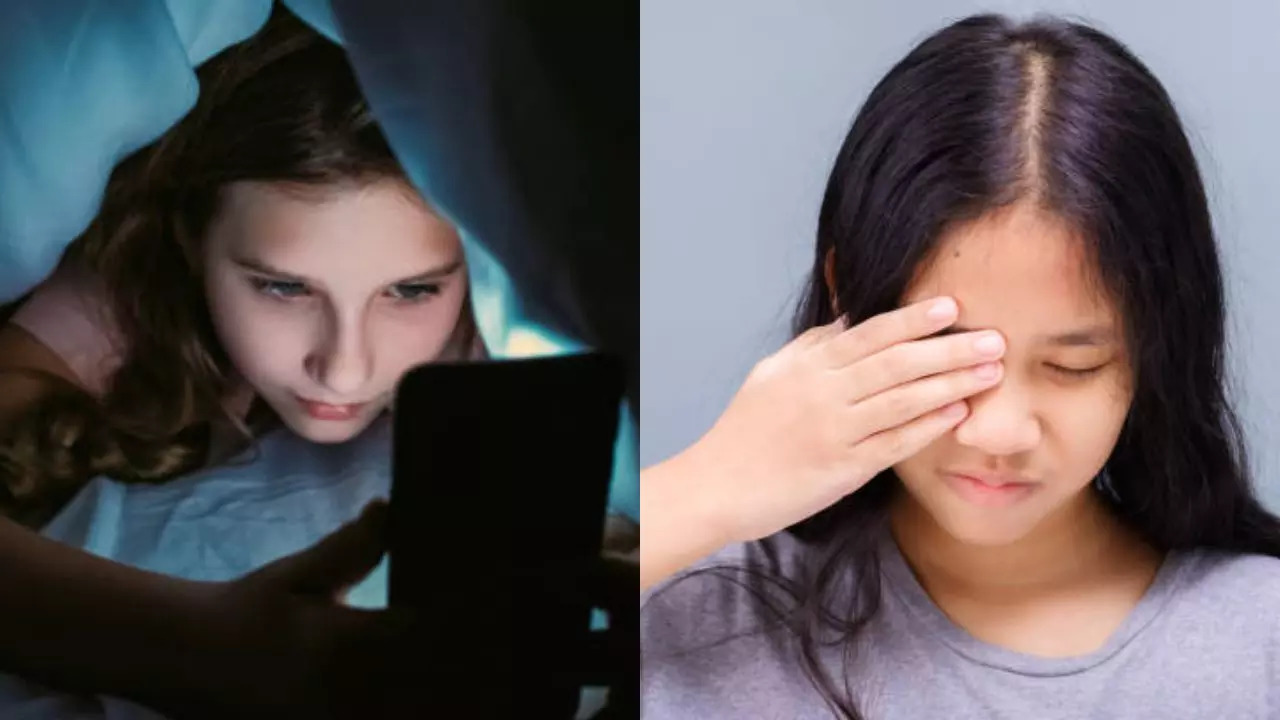-
news
-
Health
How blue light and air pollution are endangering children’s eyes – expert shares strategies for management
Children’s eye health is at risk due to increased exposure to blue light from screens and air pollution. We caught up with an eye expert who shares the harmful effects of these factors and offers parents practical strategies to protect kids’ vision through limited screen time, outdoor activities, and regular eye exams.

How blue light and air pollution are endangering children’s eyes (Image credit: iStock)
As screen time increases and air pollution With eye diseases becoming more prevalent, children’s eye health is at greater risk than ever. The two major factors contributing to this growing concern are blue light display From the harmful effects of digital devices and air pollution. With children spending more time on screens for both learning and entertainment and poor air quality in metro cities, parents need to be aware of the negative effects of these factors on young eyes.
Dr. Neeraj Sanduja, MBBS, MS, ophthalmologist and eye surgeon at Vian Eye & Retina Centre, shares strategies to protect children’s eye health.
Effect of blue light on children’s eyes
Blue light, a part of high-energy visible light, is emitted from digital screens such as smartphones, tablets, computers and televisions. While blue light is naturally present in sunlight and plays a role in regulating our sleep-wake cycles, excessive exposure to blue light from screens can be harmful, especially for children.
“Children are more sensitive to blue light because their retinas are thinner than adults,” says Dr. Sanduja. “This makes them more vulnerable to the harm caused by prolonged screen time.”
Research shows that blue light may cause digital eye strainWith symptoms like blurred vision, dry eyes, headache and difficulty concentrating. “Children often don’t recognize or express these symptoms,” says Dr. Sanduja. “This can have a negative impact on their academic performance and overall well-being.”
Additionally, studies show that long-term exposure to blue light throughout life may increase the risk of developing macular degeneration, a condition that can cause vision loss as people age.
How is air pollution affecting your child’s eye health?
Air pollution is another major factor affecting the environment. children’s eye healthPollutants such as particulate matter (PM), nitrogen dioxide (NO2), and ozone (O3) can irritate the eyes and aggravate conditions such as allergic conjunctivitis, causing inflammation and discomfort.
“Children are more affected by air pollution because they breathe more rapidly and their bodies are still developing,” explains Dr. Sanduja. “This increases their exposure to harmful pollutants, which can cause allergies and eye irritation.”
Recent studies also suggest that long-term exposure to air pollution may contribute to the development of myopia (nearsightedness), a growing concern in children’s eye care. Myopia can affect a child’s ability to see distant objects clearly and can get worse over time if not addressed.
The combined danger of blue light and air pollution
Children living in urban areas often face a double threat: spending more time on screens and being exposed to air pollution. As parents try to protect their children from poor air quality by keeping them indoors, they may unknowingly be increasing their exposure to blue light emitted from screens.
“It creates a vicious cycle,” says Dr. Sanduja. “Children are spending more time indoors using digital devices to entertain themselves, leading to greater blue light exposure and greater strain on their eyes.”
Practical Strategies to Protect Children’s Eye Health
Given these challenges, parents, teachers, and health experts need to take proactive steps to protect children’s eyes from the harmful effects of blue light and air pollution. Dr. Sanduja offers several strategies to reduce these risks:
– Limit screen time
“Parents should set clear rules about screen time,” advises Dr. Sanduja. The American Academy of Pediatrics recommends that children ages 2 to 5 should have no more than an hour of screen time per day. For older children, it is important to encourage regular breaks and set time limits.
– Use blue light filter
Many digital devices have blue light filter settings that reduce the amount of blue light emitted. “Turning on this feature can help limit exposure, especially in the evening, before bed,” says Dr. Sanduja. Additionally, blue light-blocking glasses may provide additional protection for children who spend long periods of time looking at screens.
– Follow the 20-20-20 rule
To reduce digital eye strain, Dr. Sanduja recommends the 20-20-20 rule: “Every 20 minutes, kids should take a 20-second break and look at something 20 feet away.” This simple habit can help prevent eye fatigue and strain.
– Encourage outdoor play
Outdoor activities provide many benefits, including reducing the risk of developing myopia. “Spending time outside, especially in green areas, reduces the chances of myopia in children,” explains Dr. Sanduja. Physical activity also promotes overall health and well-being.
– Monitor air quality
Parents should be aware of the air quality in their area, especially in urban environments. “On days with poor air quality, it is best to avoid outdoor activities, especially during times of peak pollution,” says Dr Sanduja. Using an air purifier indoors can also help reduce exposure to pollutants.
– Regular eye examination
Dr. Sanduja emphasizes the importance of regular eye exams for children. “Early detection of eye problems can prevent long-term damage,” he says. Eye care practitioners can monitor children’s eye health and provide advice about reducing the effects of blue light and pollution. Can give advice.
Get the latest news live on Times Now with breaking news and top headlines from around the world.
air pollution


